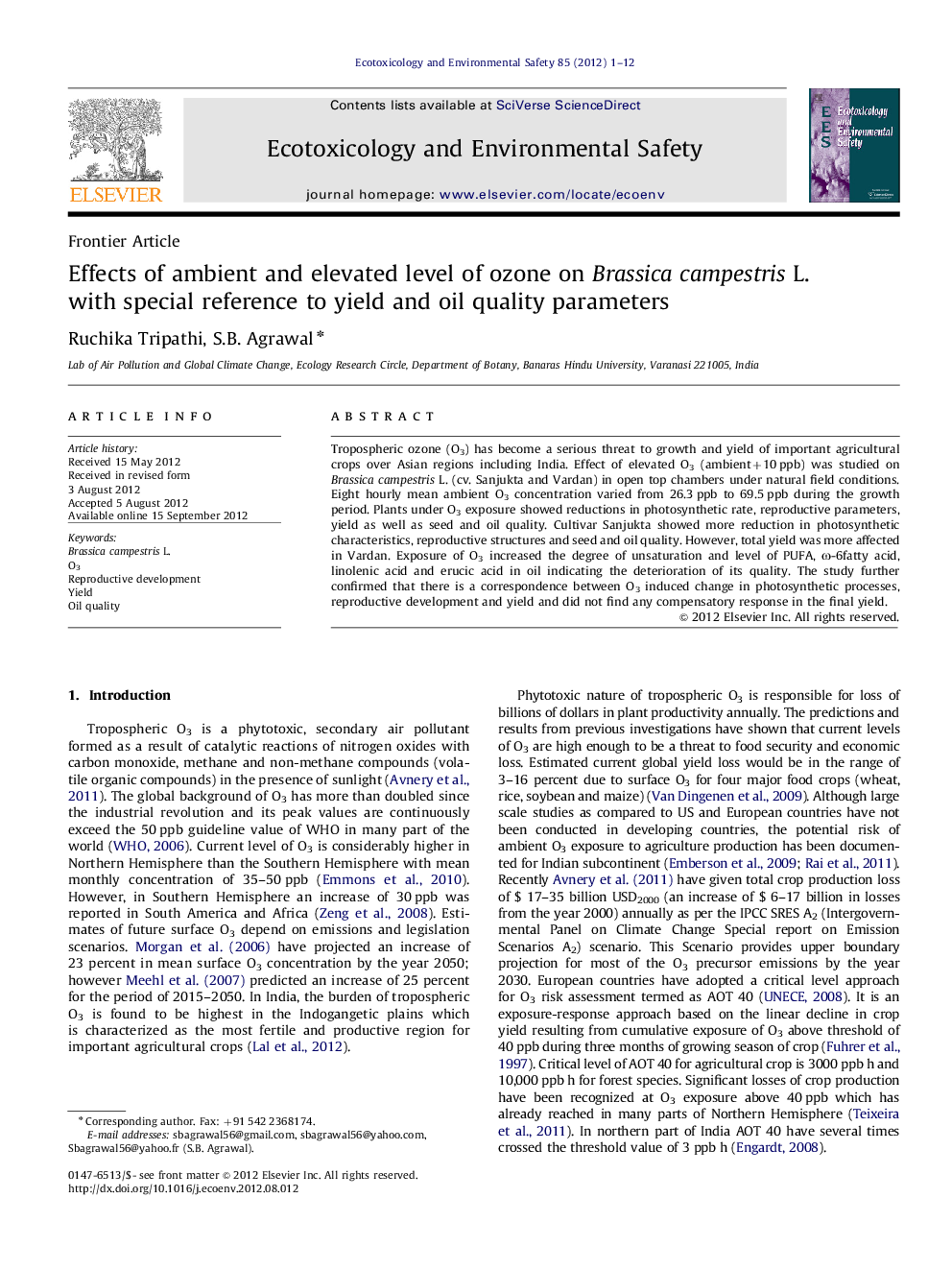| Article ID | Journal | Published Year | Pages | File Type |
|---|---|---|---|---|
| 4420798 | Ecotoxicology and Environmental Safety | 2012 | 12 Pages |
Tropospheric ozone (O3) has become a serious threat to growth and yield of important agricultural crops over Asian regions including India. Effect of elevated O3 (ambient+10 ppb) was studied on Brassica campestris L. (cv. Sanjukta and Vardan) in open top chambers under natural field conditions. Eight hourly mean ambient O3 concentration varied from 26.3 ppb to 69.5 ppb during the growth period. Plants under O3 exposure showed reductions in photosynthetic rate, reproductive parameters, yield as well as seed and oil quality. Cultivar Sanjukta showed more reduction in photosynthetic characteristics, reproductive structures and seed and oil quality. However, total yield was more affected in Vardan. Exposure of O3 increased the degree of unsaturation and level of PUFA, ω-6fatty acid, linolenic acid and erucic acid in oil indicating the deterioration of its quality. The study further confirmed that there is a correspondence between O3 induced change in photosynthetic processes, reproductive development and yield and did not find any compensatory response in the final yield.
► Effect of ambient and elevated level of O3 was studied on B. campestris L. ► Cultivar response was assessed in terms of physiology, reproductive, yield and oil quality parameters. ► Mustard did not show any compensatory response in the final yield. ► Present study is the first report on effect of O3 on quality deterioration of oil.
